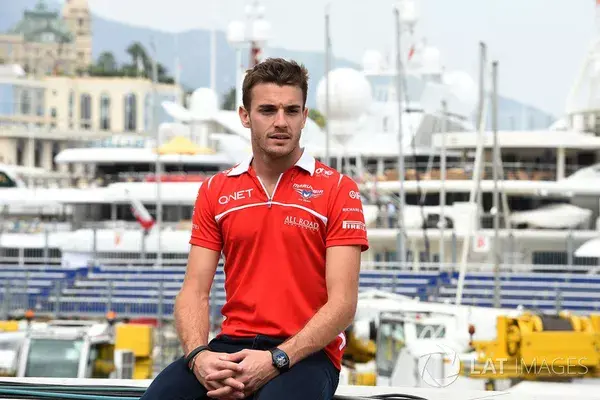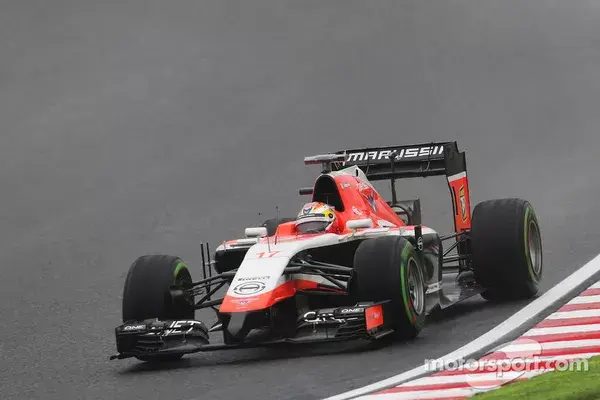Jules Bianchi and how he changed F1 forever.
- mallikarull
- Mar 31, 2024
- 4 min read
Jules Bianchi is a name many fans of the sport will recognise. A French driver with a long list of accomplishments since debuting in Karts at the age of 5 to his short time in Formula One from 2013 to 2014. Bianchi was names Autosport’s 2013 Rookie of the year, and was looking to be on the path of becoming a future driver in the iconic Scarlett Red.

Bianchi’s journey to F1
Bianchi graduated from karts to racing cars in 2007 in Formula Renault 2.0, winning the French series as a rookie with 5 wins, whilst also competing in the European championship.
After the success in Formula Renault 2.0, teams were quick to snatch the young talent, Bianchi transitioning to Formula Three the following year, winning 2 rounds for ART in 2008. Bianchi remained with the team for another season, with 8 victories to conclude 2009, and landing a spot of the F1 young driver Programme.
Bianchi transitioned with ART to GP2 in 2010, racing in Asia over the winter to prepare for his first year, which he would complete third overall in a winless season. going into 2011 Bianchi placed second behind Romain Grosjean in the GP2 Asia championship, Bianchi was unable to keep ahead of Grosjean in the main series, finishing P3 by one point after a battle with Luca Filippi in the second half of the season.
Bianchi held onto the support of Ferrari going into 2012 Bianchi completed the year having driven for Force India in 9 of the seasons practice sessions. Bianchi at the time competed in the formula Renault 3.5 championship with Tech 1 racing, completing the troubling year of infringements and punishments in P2.

In 2013 Bianchi reached his dream with part of the driver lineup for Force India racing team in Formula One. Partnered with Paul di Resta, during the final pre-season test though they announced that Bianchi’s seat would pass to Adrian Sutil.
Fortunately, Bianchi wouldn’t have to wait long for his next seat, Marussia opening a seat for the Frenchman, when Luiz Razia’s sponsorship package failed to materialise. Bianchi settled in quickly, ultimately being named Autosport’s rookie of the year, and following the season with a second season for the team in 2014 with occasional tests for Ferrari. Bianchi scoring his first points in F1 in Monaco, finishing in P9 with 2 points, climbing up from P19.
Suzuka 2014
The 2014 season would be the final season of Bianchi’s career in Formula One after a fatal crash at the 2014 Japanese Grand Prix in a race full of heavy rain and treacherous conditions.
The 25-year-old faced severe head injuries after sliding off track on Lap 43 while following the safety car, colliding into the underside of a mobile crane that was in the process of recovering Sutil’s car. Sutil crashed into the barriers a lap earlier, Bianchi going off at the same point of the track as Sutil at Turn 7. Bianchi made contact at the speed of 126 Kph, something the Marussia car was not capable of baring, his head making contact with the crane causing severe head injuries.

Many reasons have been linked to the reason for Bianchi’s collision. One main reason many speculate to be a human error, with Bianchi allegedly failing to slow enough under the double yellow flag as well as, losing control. The FIA stating Bianchi “over-controlled the oversteering car, such that he left the track earlier than Sutil”.
Some link the crash to the interesting design of the Marussia’s braking system, the FIA concluded that it “proved to be incompatible with the Firesafe setting”, which ordinarily would have cut the engine.
Bianchi remained in hospital for 9 months after the incident in a coma, before passing on the 17th July 2015.
Response to the incident
Jules Bianchi is not a name people will forget, his passing leading to some of the most revolutionary safety mechanisms in the sport that have saved countless drivers throughout motorsports.
In 2015 the FIA introduced the Virtual Safety Car, which would force drivers to immediately slow down. In 2018 further progress was made with the introduction of the Halo device.
While the Halo was met by a large amount of controversy, the halo has proved to be a large step forward in safety in Formula One. The halo is fitted around the cockpit to protect the drivers’ heads from flying debris etc. Since 2018 the Halo has saved drivers such as Hamilton, Verstappen, Zhou, Alonso and Bianchi’s Godson, Charles Leclerc, as well as many other drivers across the motorsport industry.





Comments